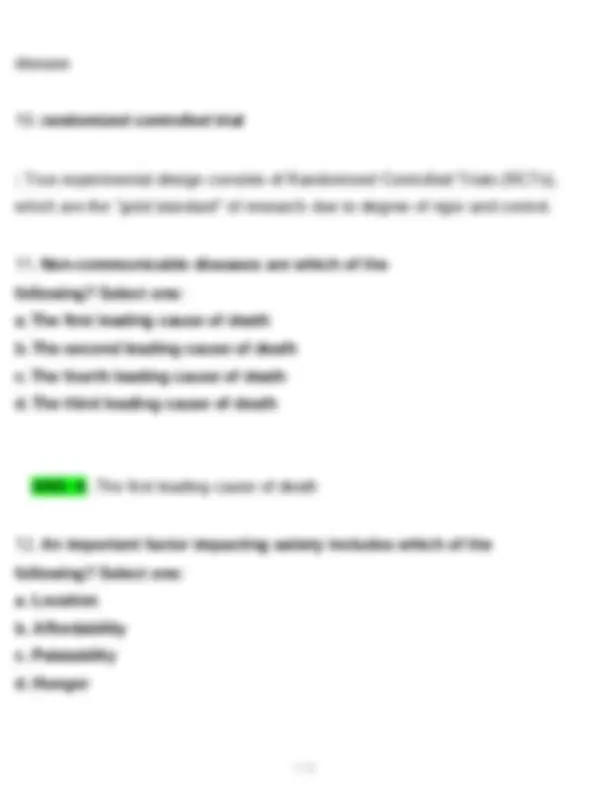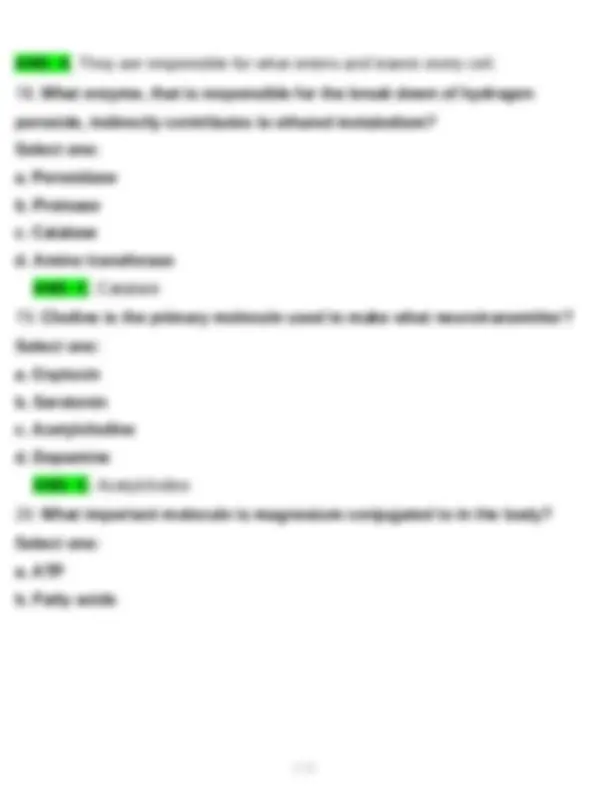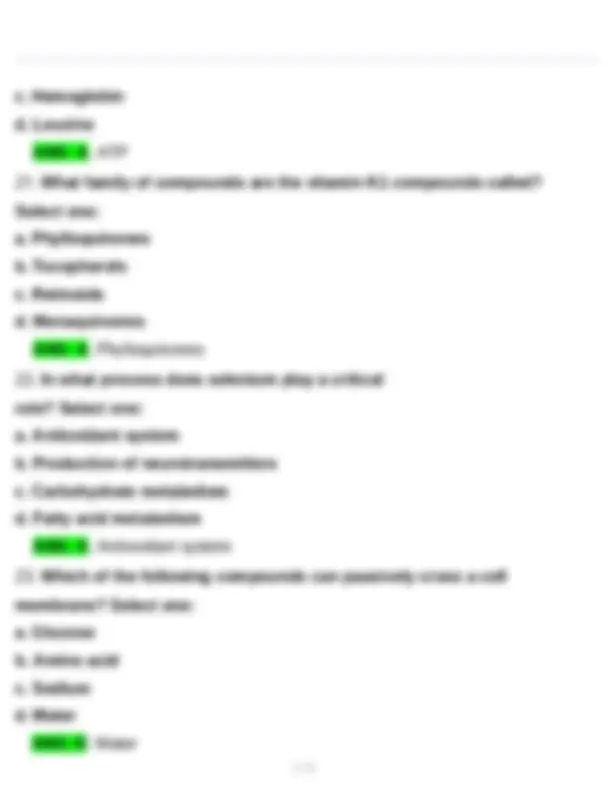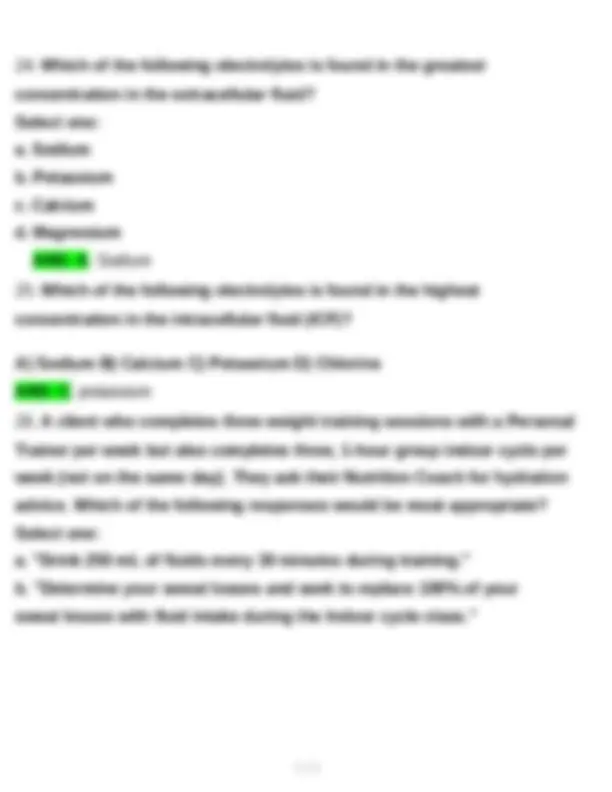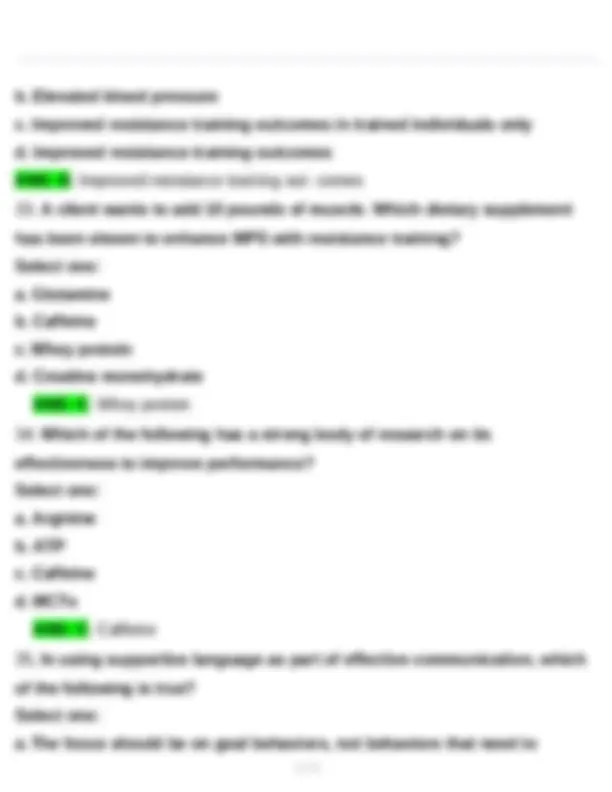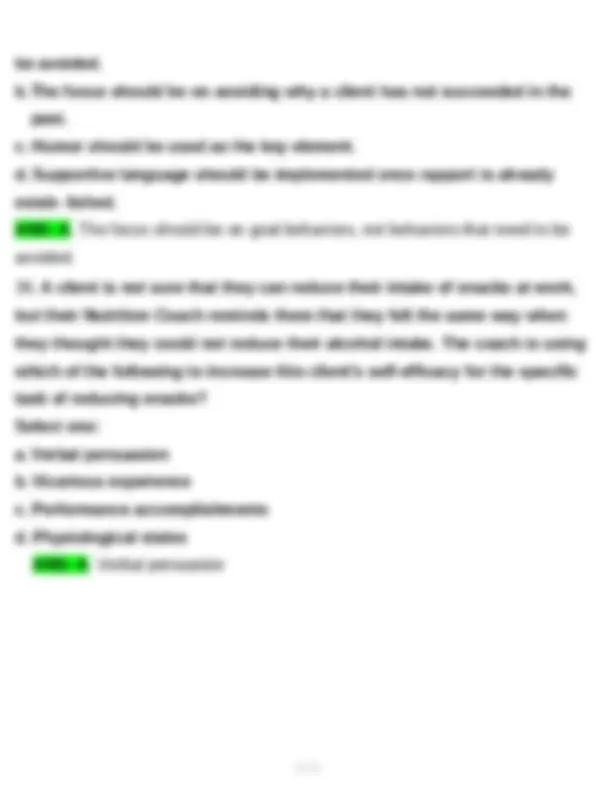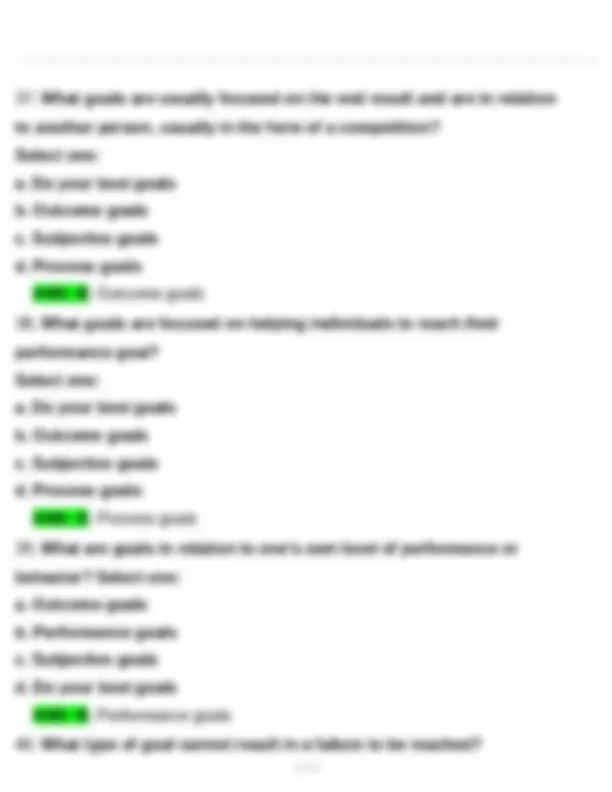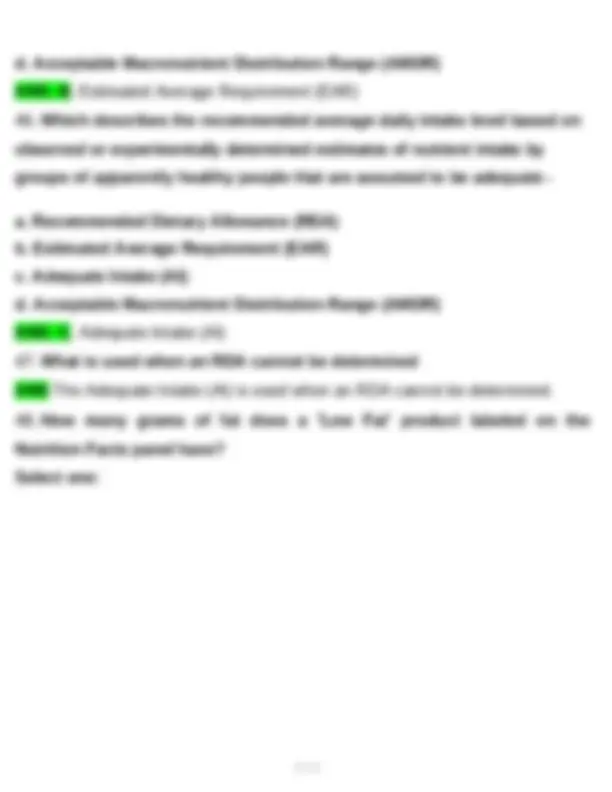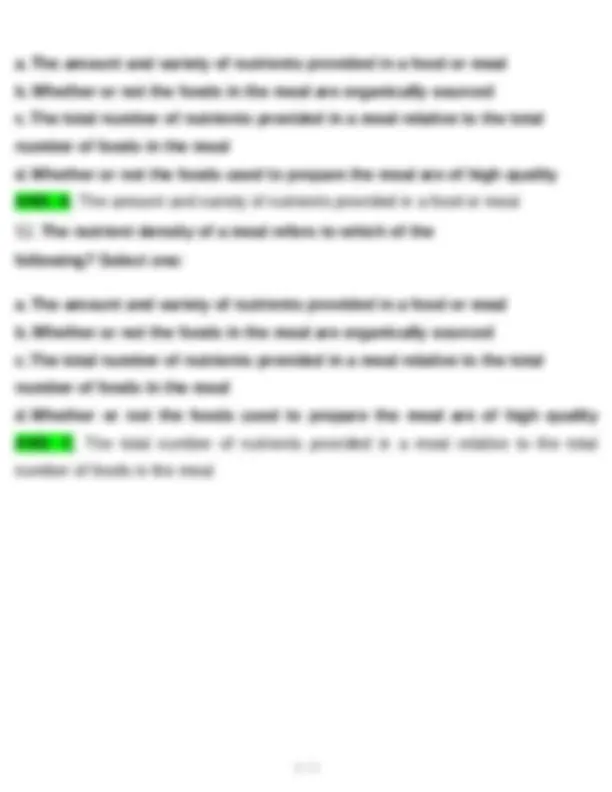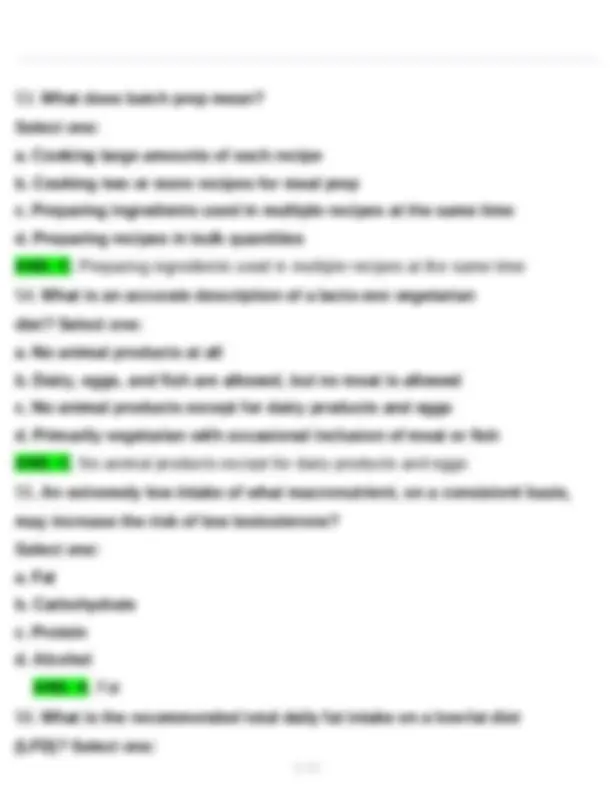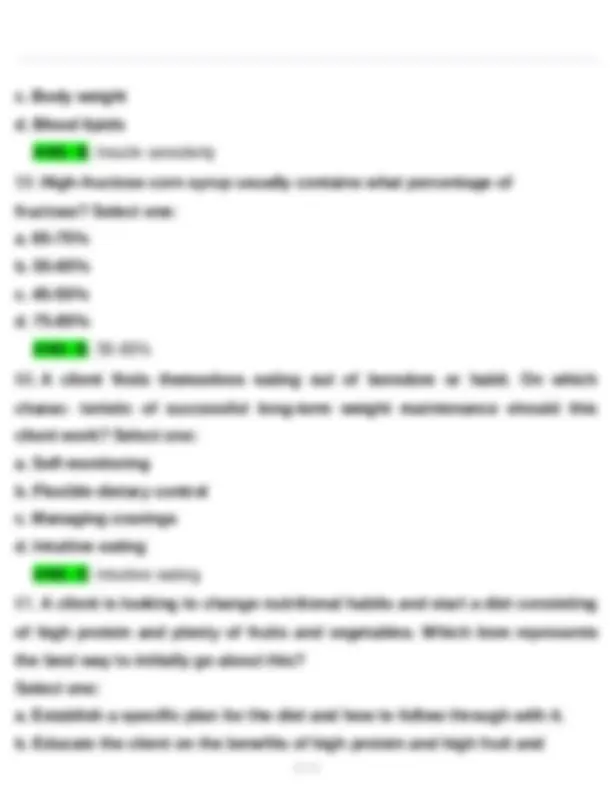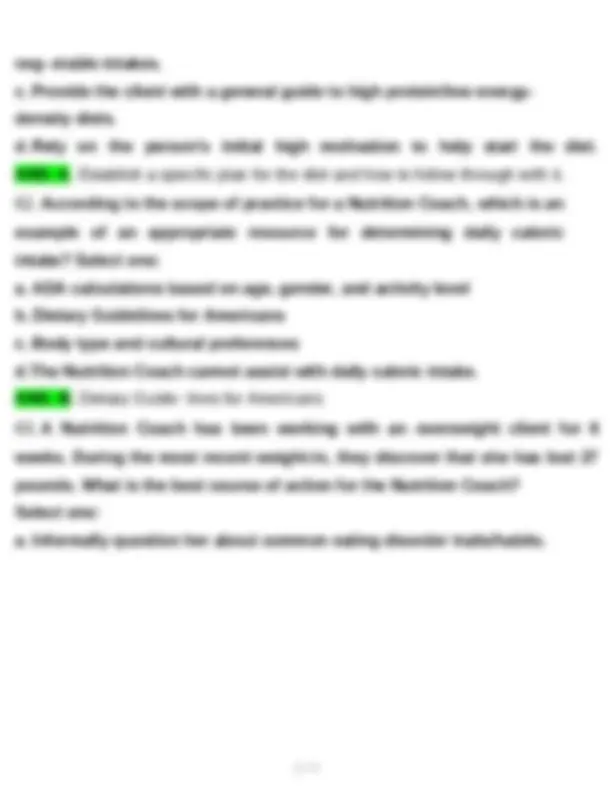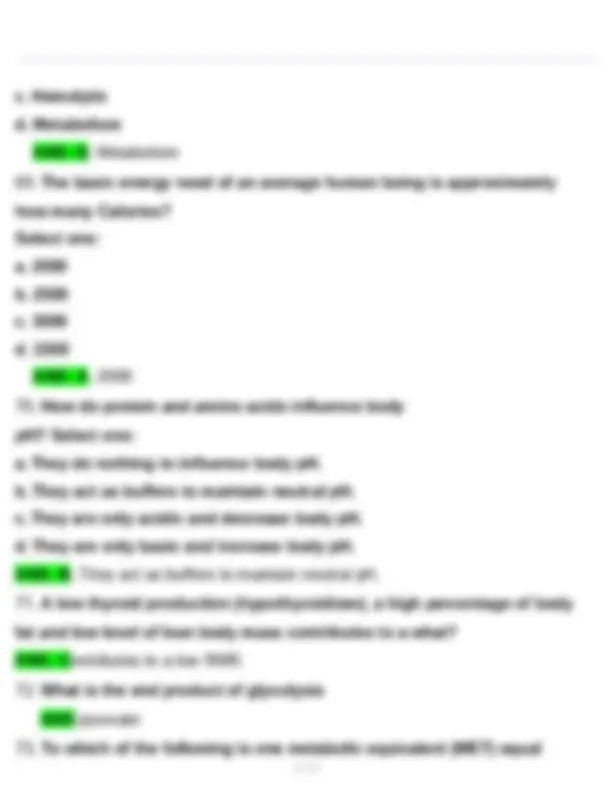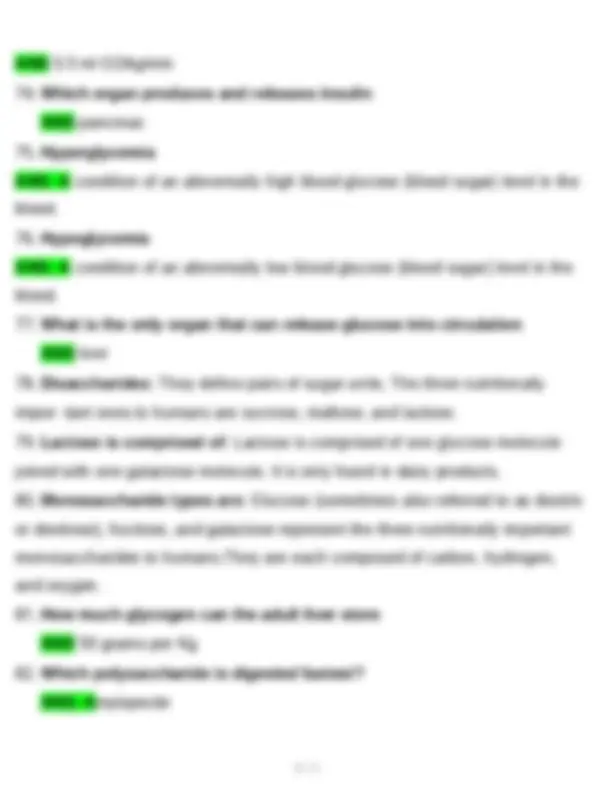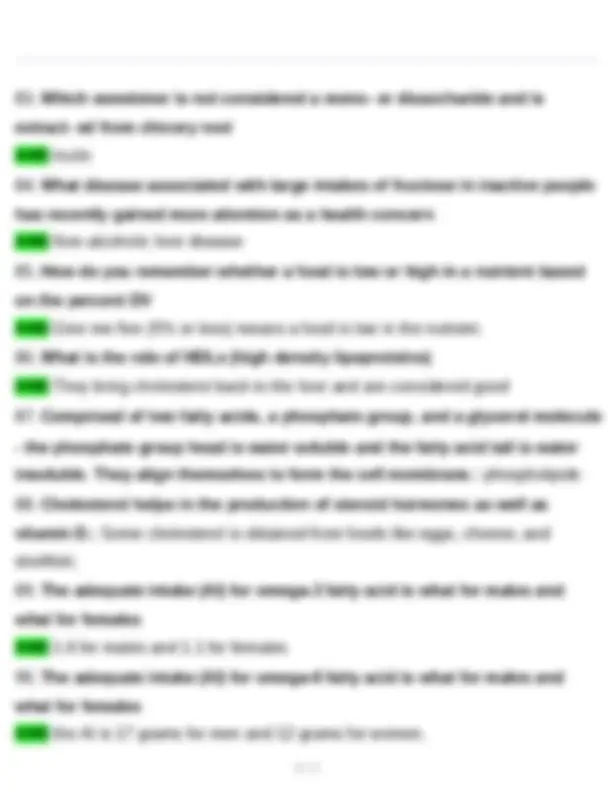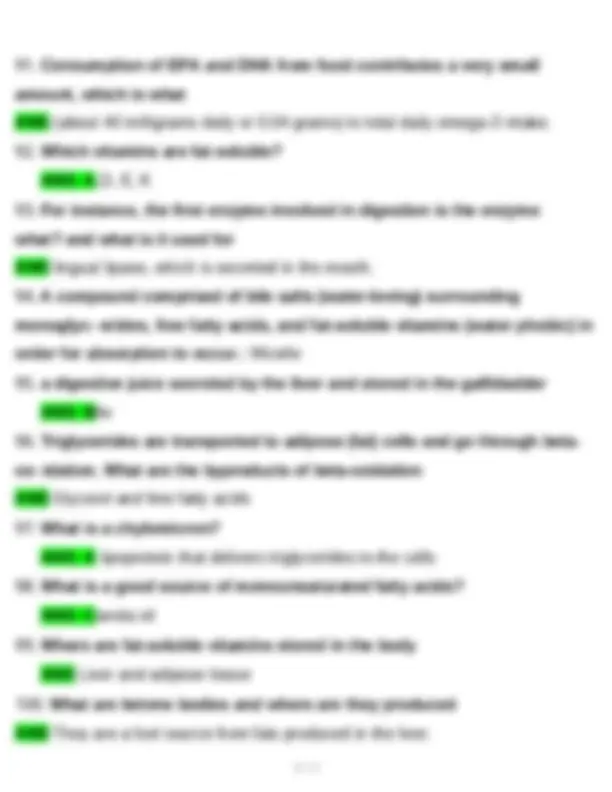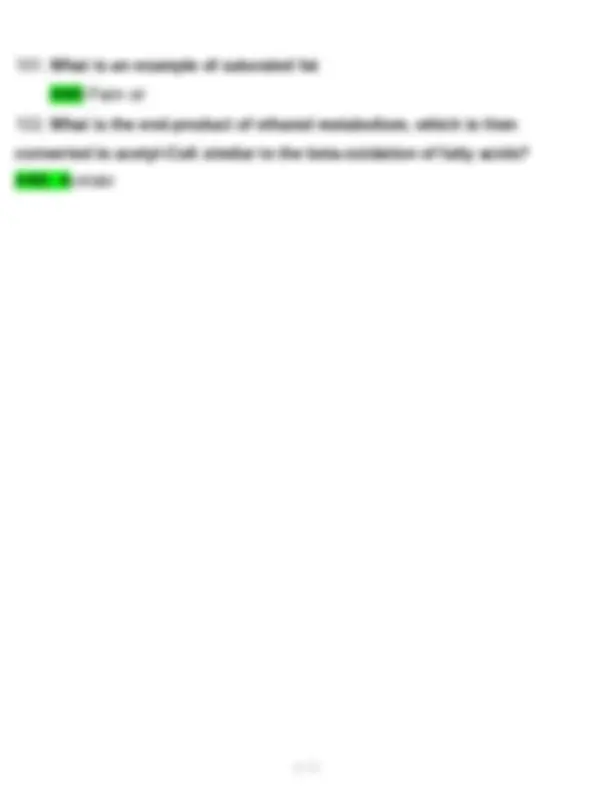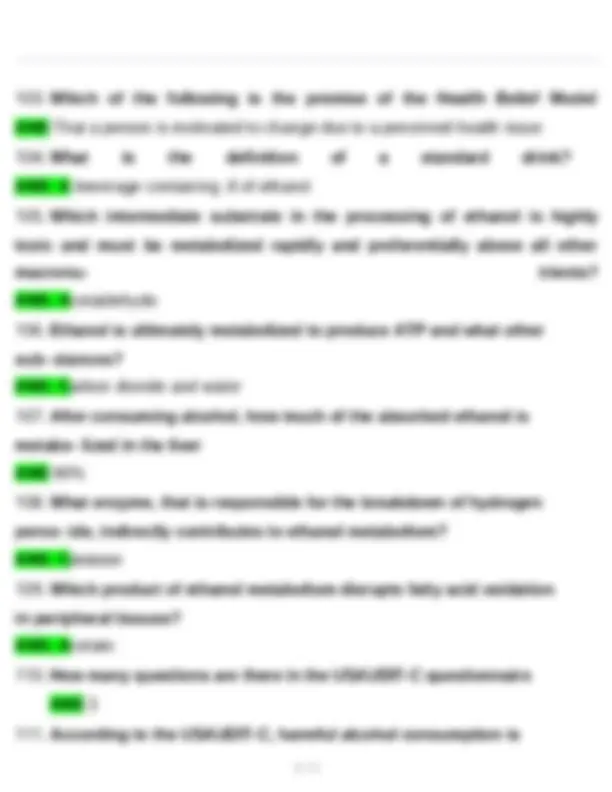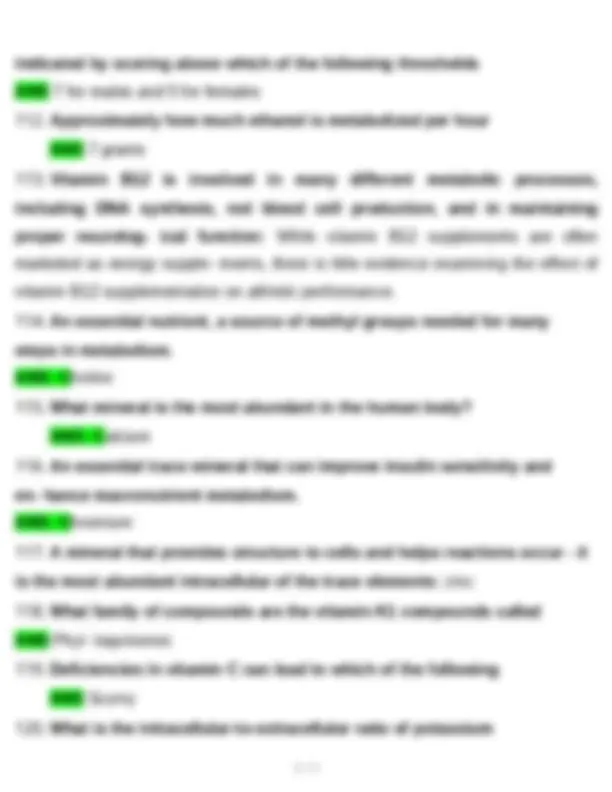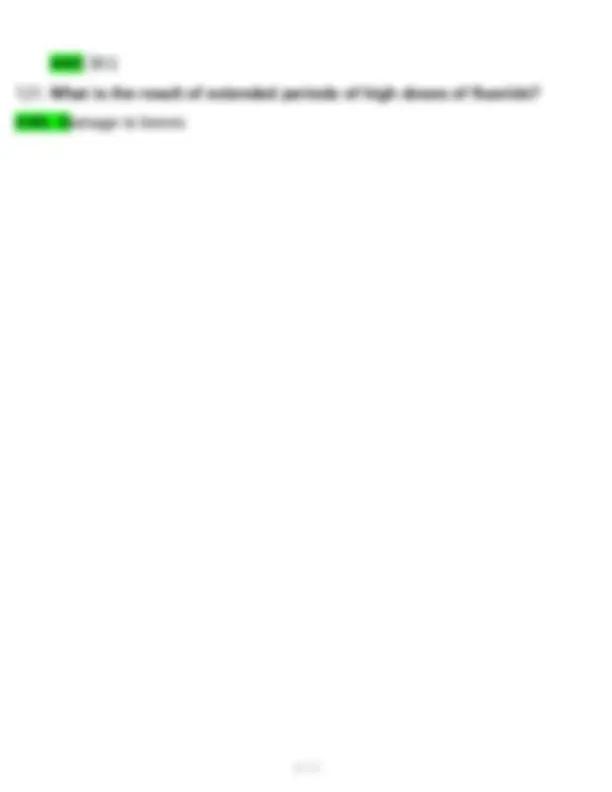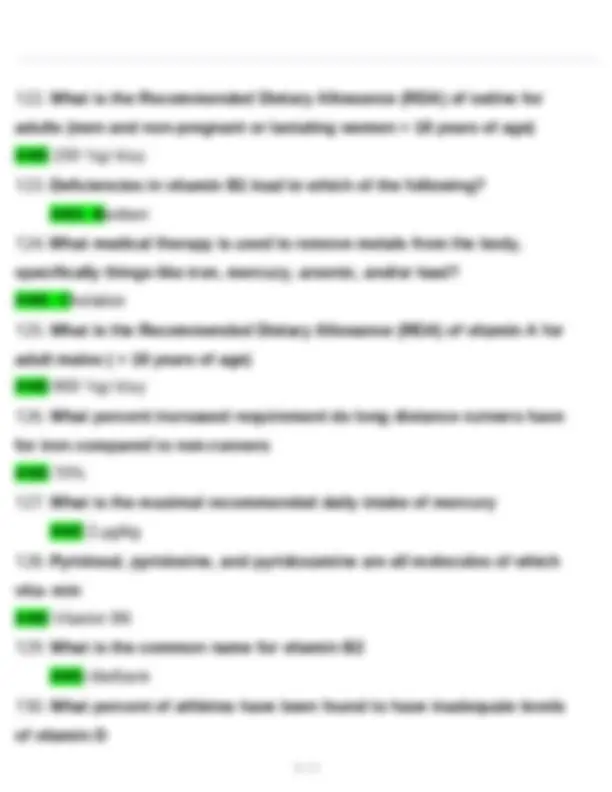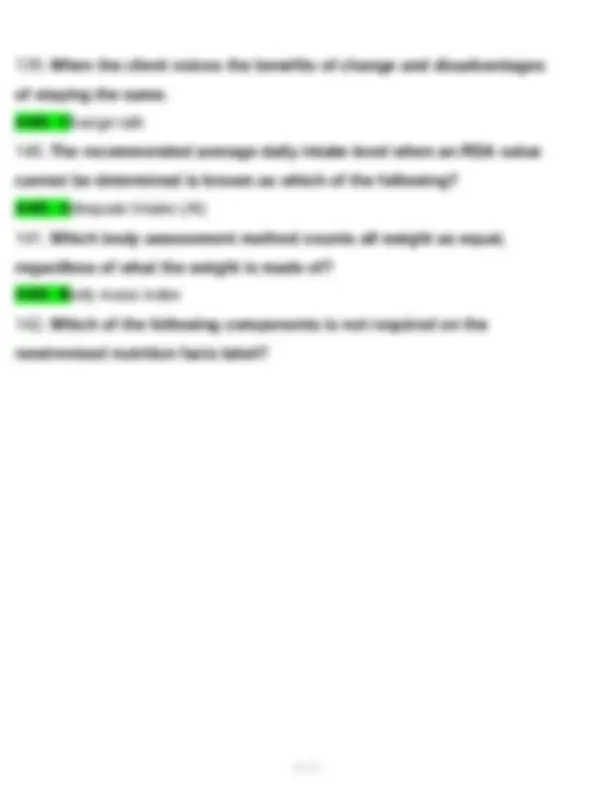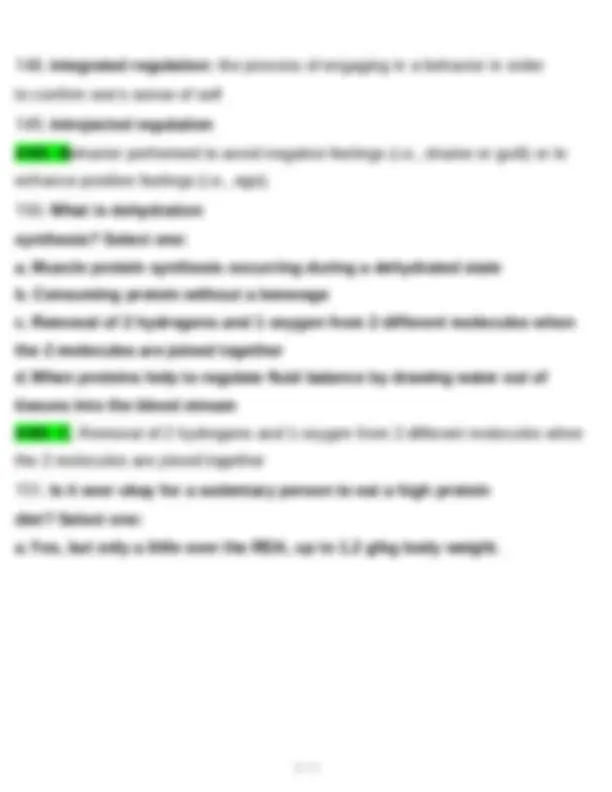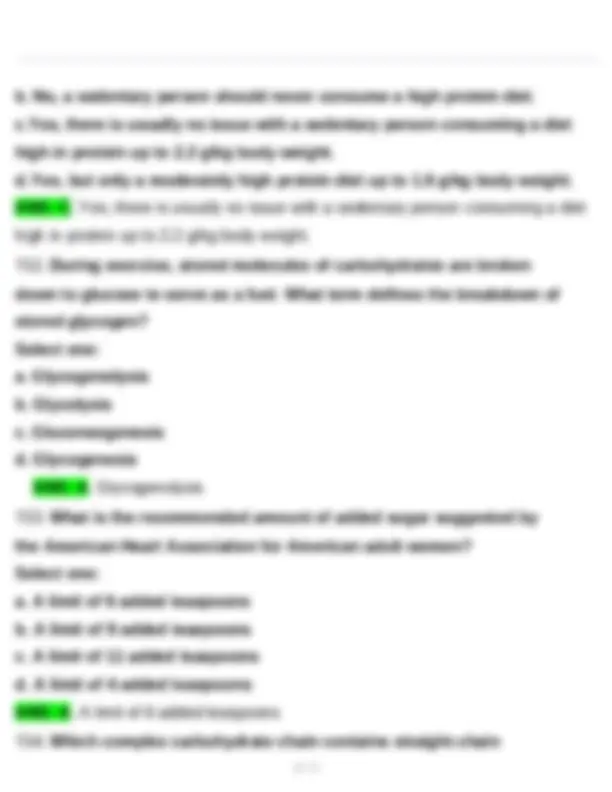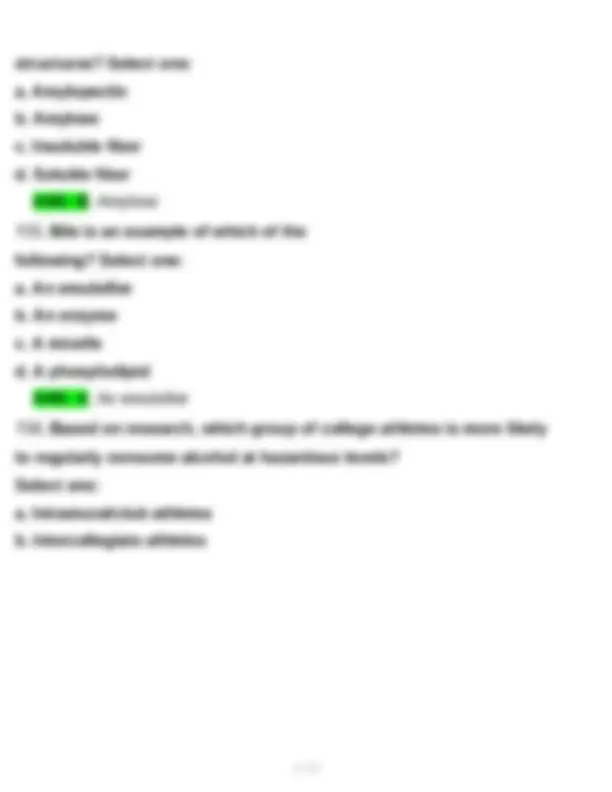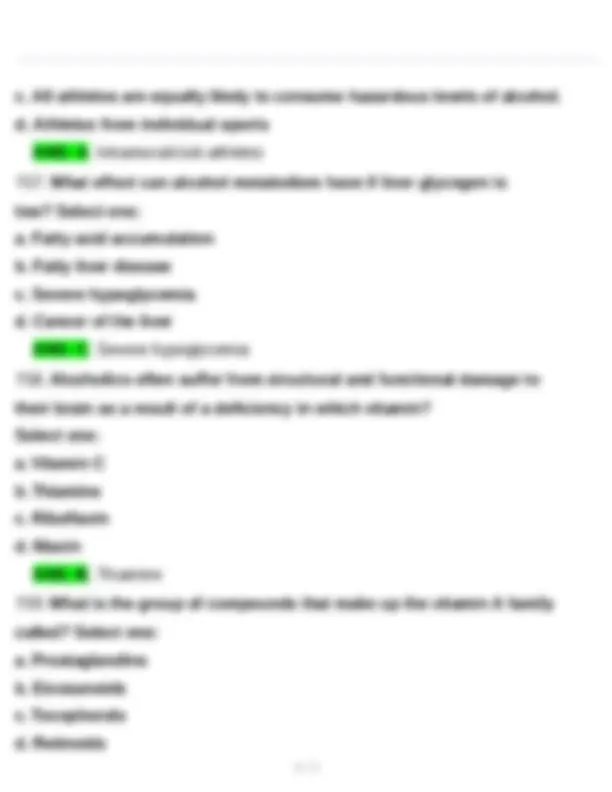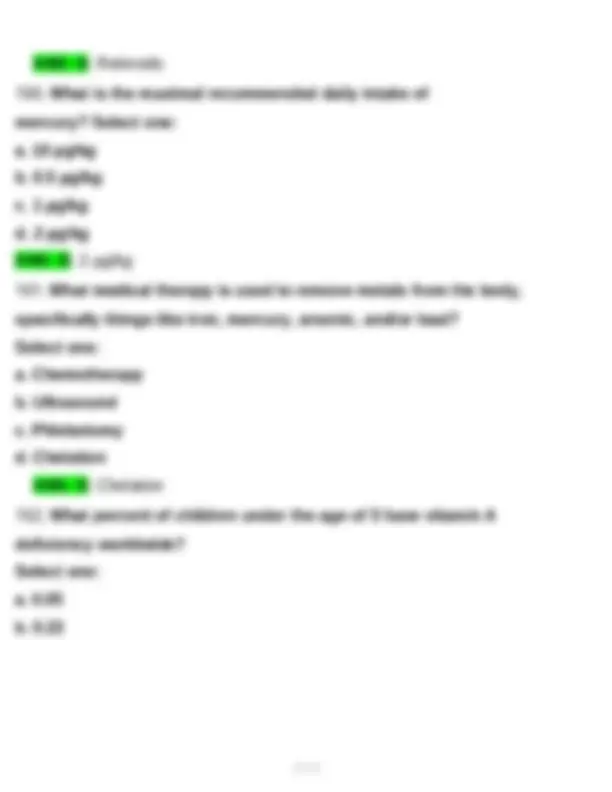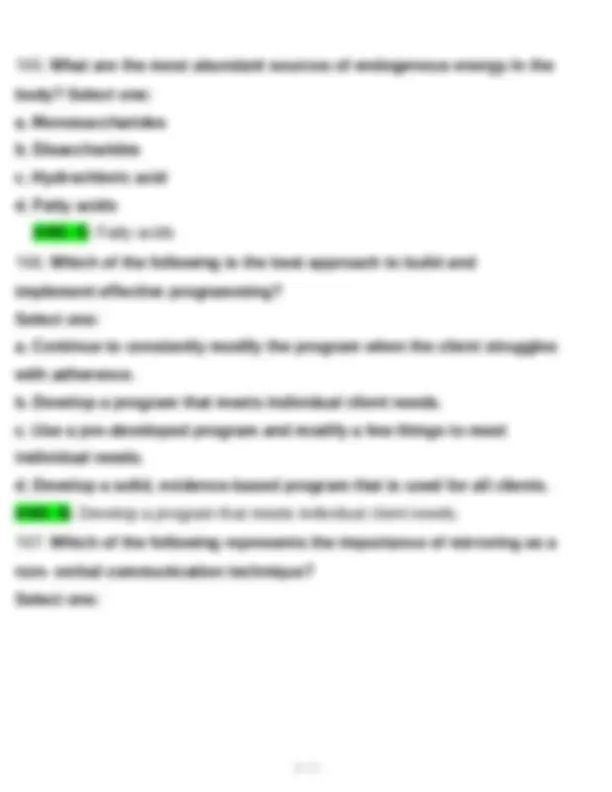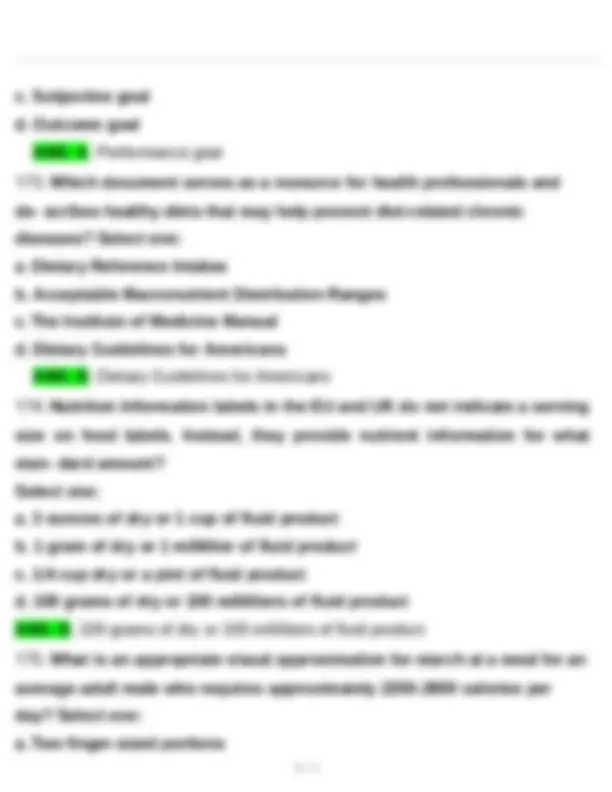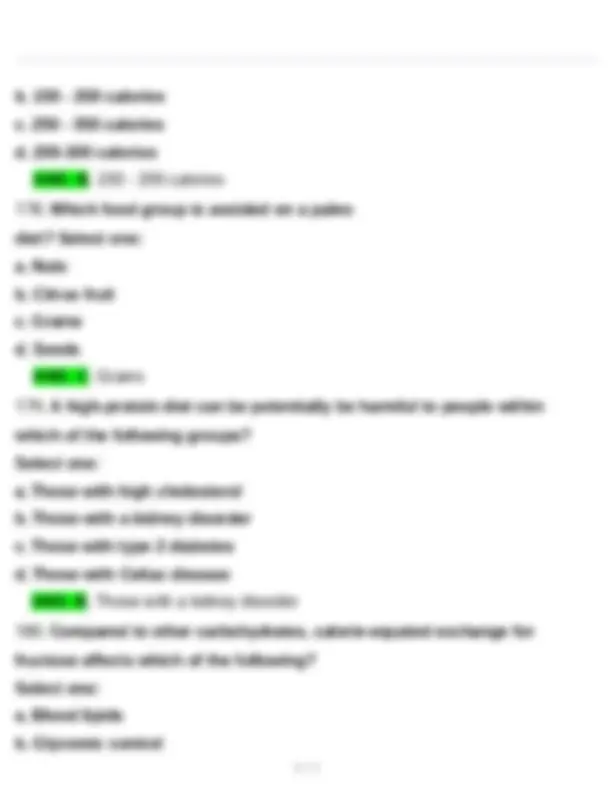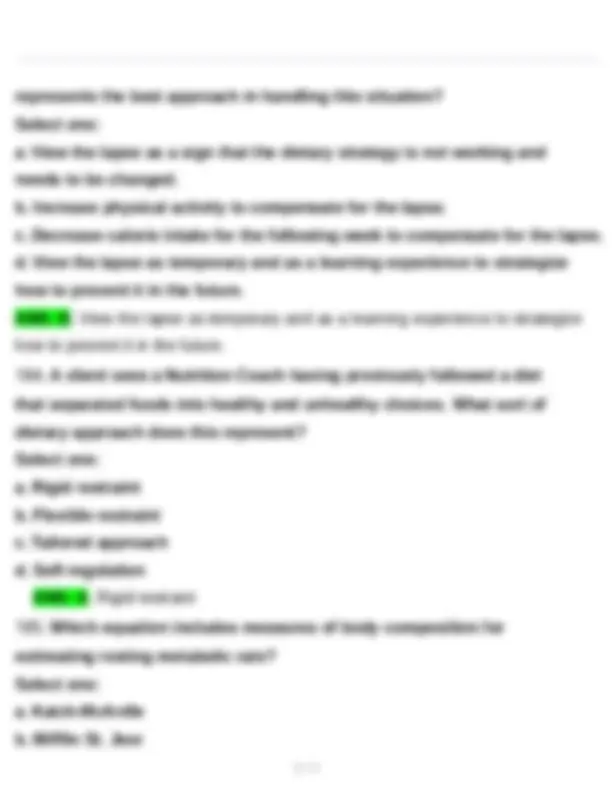Download NASM Certified Nutrition Coaching Exam and more Exams Nutrition in PDF only on Docsity!
NASM Certified Nutrition Coaching Exam
Questions and Answers
- It is not uncommon for clients to confide in the Nutrition Coach. Which client conversation would be grounds for a referral to a licensed healthcare professional? Select one: a. Stress-eating from recent divorce b. Daily panic attacks c. Self-proclaimed "sugar addict" d. Occasional constipation ANS: B. Daily panic attacks
- With which client would it be most appropriate for the Nutrition Coach to work? Select one: a. Pre-pubescent teenager who is overweight b. Client who wants nutrition therapy for cancer prevention c. Client who wants accountability during a 9-week extreme calorie- restricted diet
d. Overweight client who wants to train for a 10K ANS: D. Overweight client who wants to train for a 10K
- Common assessments performed by a Nutrition Coach include height, weight, body composition, and what other test? Select one: a. SCOFF test b. Anthropometric measurements c. Blood pressure d. Hydrostatic weighing ANS: B. Anthropometric measurements
- Which of the following represents a critical evaluation of a study by other scientists? Select one: a. Scientific method b. Peer review c. Narrative review d. Systematic review
- Historical research : Looks at events that happened in the past and uses it to make inferences about other times, including the future
- cross-sectional study ANS: A study in which a representative cross section of the population is tested or surveyed at one specific time.
- Case-control study ANS: A type of epidemiologic study where a group of individuals with the diseases, referred to as cases, are compared to individuals without the disease, referred to as controls
- Cohort study ANS: A type of epidemiologic study where a group of exposed individ- uals (individuals who have been exposed to the potential risk factor) and a group of non-exposed individuals are followed over time to determine the incidence of
disease
- randomized controlled trial : True experimental design consists of Randomized Controlled Trials (RCTs), which are the "gold standard" of research due to degree of rigor and control.
- Non-communicable diseases are which of the following? Select one: a. The first leading cause of death b. The second leading cause of death c. The fourth leading cause of death d. The third leading cause of death ANS: A. The first leading cause of death
- An important factor impacting satiety includes which of the following? Select one: a. Location b. Affordability c. Palatability d. Hunger
c. Dairy d. Beverages ANS: D. Beverages
- What is the current daily fiber intake recommendation for women in the U.S.? Select one: a. 25 grams of fiber daily b. 20 grams of fiber daily c. 15 grams of fiber daily d. 30 grams of fiber daily ANS: A. 25 grams of fiber daily
- What is the molecular structure for glucose? Select one: a. H2O b. C6H12O c. C12H22O d. C ANS: B. C6H12O
- What is the key role of phospholipids? Select one: a. They are responsible for what enters and leaves every cell. b. They are responsible for transporting fat-soluble vitamins. c. They are responsible for transporting cholesterol in the bloodstream. d. They are responsible for transporting triglycerides in the bloodstream.
ANS: A. They are responsible for what enters and leaves every cell.
- What enzyme, that is responsible for the break down of hydrogen peroxide, indirectly contributes to ethanol metabolism? Select one: a. Peroxidase b. Protease c. Catalase d. Amino transferase ANS: C. Catalase
- Choline is the primary molecule used to make what neurotransmitter? Select one: a. Oxytocin b. Serotonin c. Acetylcholine d. Dopamine ANS: C. Acetylcholine
- What important molecule is magnesium conjugated to in the body? Select one: a. ATP b. Fatty acids
- Which of the following electrolytes is found in the greatest concentration in the extracellular fluid? Select one: a. Sodium b. Potassium c. Calcium d. Magnesium ANS: A. Sodium
- Which of the following electrolytes is found in the highest concentration in the intracellular fluid (ICF)? A) Sodium B) Calcium C) Potassium D) Chlorine ANS: C. potassium
- A client who completes three weight training sessions with a Personal Trainer per week but also completes three, 1-hour group indoor cycle per week (not on the same day). They ask their Nutrition Coach for hydration advice. Which of the following responses would be most appropriate? Select one: a. "Drink 250 mL of fluids every 30 minutes during training." b. "Determine your sweat losses and seek to replace 100% of your sweat losses with fluid intake during the Indoor cycle class."
c. "Your workout sessions are not long enough in duration to cause sweat losses that dictate a personal hydration plan. Keep fluids available during exercise, and drink based on thirst." d. "Drink sports drinks instead of water on days you go to indoor cycle class" ANS: C. "Your workout sessions are not long enough in duration to cause sweat losses that dictate a personal hydration plan. Keep fluids available during exercise, and drink based on thirst."
- A client weighs 70 kg and is training to complete a marathon in a time of about 4 h. The client's sweat losses are expected to equal around 4 liters (about 6% of body mass). Which fluid intake goal would be most appropriate? Select one: a. Drink 2 liters of fluid during the race. b. Drink 1 liter of fluid during the race. c. Drink 6 liters of fluid during the race. d. Drink 4 liters of fluid during the race. ANS: A. Drink 2 liters of fluid during the race.
- What type of nourishment should an athlete consume during an endurance event lasting over 60 minutes ANS Transportable carbohydrates (soft gels)
- What type of nourishment should an athlete consume during an endurance event lasting under 60 minutes? Select one:
b. Elevated blood pressure c. Improved resistance training outcomes in trained individuals only d. Improved resistance training outcomes ANS: D. Improved resistance training out- comes
- A client wants to add 10 pounds of muscle. Which dietary supplement has been shown to enhance MPS with resistance training? Select one: a. Glutamine b. Caffeine c. Whey protein d. Creatine monohydrate ANS: C. Whey protein
- Which of the following has a strong body of research on its effectiveness to improve performance? Select one: a. Arginine b. ATP c. Caffeine d. MCTs ANS: C. Caffeine
- In using supportive language as part of effective communication, which of the following is true? Select one: a. The focus should be on goal behaviors, not behaviors that need to
be avoided. b.The focus should be on avoiding why a client has not succeeded in the past. c. Humor should be used as the key element. d. Supportive language should be implemented once rapport is already estab- lished. ANS: A. The focus should be on goal behaviors, not behaviors that need to be avoided.
- A client is not sure that they can reduce their intake of snacks at work, but their Nutrition Coach reminds them that they felt the same way when they thought they could not reduce their alcohol intake. The coach is using which of the following to increase this client's self-efficacy for the specific task of reducing snacks? Select one: a. Verbal persuasion b. Vicarious experience c. Performance accomplishments d. Physiological states ANS: A. Verbal persuasion
Select one: a. Process goal b. Self-determined goal c. Do your best goal d. Outcome goal ANS: C. Do your best goal
- How many motivational interviewing strategies are there? a. 3 b. 6 c. 7 d. 5 ANS: D. 5
- Which of the following is defined as the regular food and beverage intake of an individual over time? Select one: a. Eating pattern b. Lifestyle matrix c. Estimated Average Requirement d. Recommended Dietary Allowance ANS: A. Eating pattern
- What is the Acceptable Macronutrient Distribution Range (AMDR) for car- bohydrates? Select one: a. 20 to 35% b. 45 to 65% c. 10 to 35% d. 35 to 45% ANS: B. 45 to 65%
- Which Dietary Reference Intake (DRI) describes the average daily nutrient intake level sufficient to meet the nutrient requirement of nearly all healthy individuals in a particular life stage and gender group? Select one: a. Recommended Dietary Allowance (RDA) b. Estimated Average Requirement (EAR) c. Tolerable Upper Intake Level (UL) d. Acceptable Macronutrient Distribution Range (AMDR) ANS: A. Recommended Di- etary Allowance (RDA)
- Which Dietary Reference Intake (DRI) describes the average daily nutrient intake level estimated to meet the requirement of half the healthy individuals in a particular life stage and gender group Select one: a. Recommended Dietary Allowance (RDA) b. Estimated Average Requirement (EAR) c. Tolerable Upper Intake Level (UL)
a. Three grams of fat per serving b. Five grams of fat or less per serving c. Three grams of fat or less per serving d. One gram of fat per serving ANS: C. Three grams of fat or less per serving
- Which of the following nutrients does not have a % Daily Value listed on the Nutrition Facts label? Select one: a. Carbohydrate b. Protein c. Dietary Fiber d. Added Sugars ANS: B. Protein
- If a supplement makes a claim about a nutrient (e.g. a vitamin, mineral, amino acid, or type of fat), what information must it provide on the Supplement Facts label? Select one: a. The RDA of the nutrient in a 2000 calorie diet b. The amount of the nutrient in a serving of the product c. The %RDA of the nutrient in the product d.The ratio of the nutrient in the product ANS: B. The amount of the nutrient in a serving of the product
- The nutrient quality of a meal refers to which of the following? Select one:
a. The amount and variety of nutrients provided in a food or meal b. Whether or not the foods in the meal are organically sourced c.The total number of nutrients provided in a meal relative to the total number of foods in the meal d. Whether or not the foods used to prepare the meal are of high quality ANS: A. The amount and variety of nutrients provided in a food or meal
- The nutrient density of a meal refers to which of the following? Select one: a. The amount and variety of nutrients provided in a food or meal b. Whether or not the foods in the meal are organically sourced c.The total number of nutrients provided in a meal relative to the total number of foods in the meal d. Whether or not the foods used to prepare the meal are of high quality ANS: C. The total number of nutrients provided in a meal relative to the total number of foods in the meal



